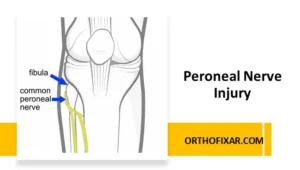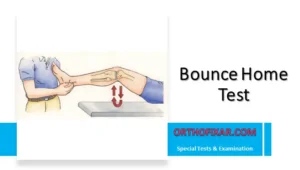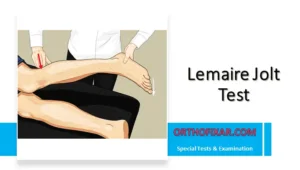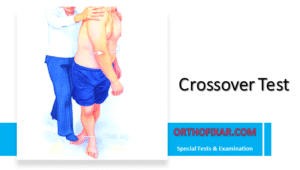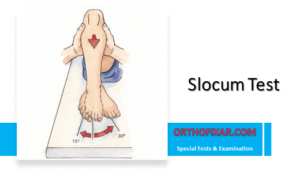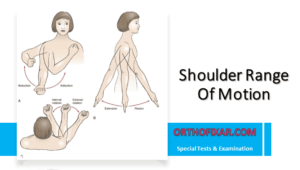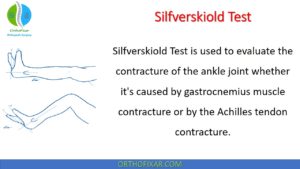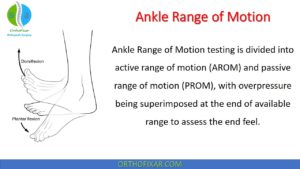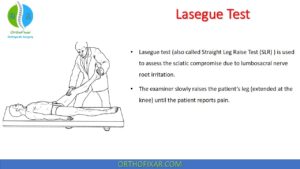Oppenheim Test
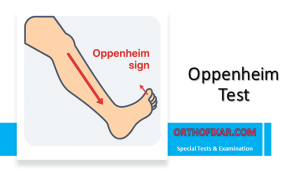
The Oppenheim Test is a neurological examination maneuver used to assess for upper motor neuron (UMN) lesions, particularly those involving the corticospinal (pyramidal) tract. It serves as an alternative method to elicit the Babinski test when the plantar reflex cannot be easily tested or when additional confirmation is desired.
It was named after Hermann Oppenheim (1 January 1858 – 5 May 1919) who was one of the leading neurologists in Germany.
See Also: Babinski Test
How to Perform the Oppenheim Test?
- The patient is positioned supine or seated with the leg relaxed.
- The examiner uses the thumb or fingernail to apply firm pressure and runs it down the anteromedial surface of the tibia, following the crest of the tibia from proximal (near the knee) to distal (toward the ankle).
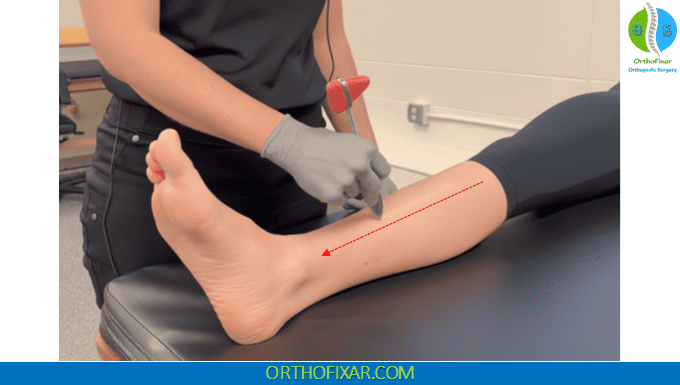
What Does a Positive Oppenheim Test Mean?
A negative Oppenheim test occurs when there is no abnormal movement of the toes — specifically, no dorsiflexion of the great toe and no fanning of the other toes. This response indicates normal neurological function.
A positive Oppenheim test is present when stimulation of the tibial crest causes dorsiflexion (extension) of the great toe and abduction (fanning) of the other toes — the same as a positive Babinski sign.
A positive Oppenheim test indicates the presence of a pathological (extensor) plantar response, which is a hallmark of an upper motor neuron lesion. These lesions can result from conditions like:
- Stroke (cerebrovascular accident)
- Traumatic brain or spinal cord injury
- Multiple sclerosis
- Amyotrophic lateral sclerosis (ALS)
- Brain or spinal cord tumors
In infants under 12-24 months, a positive response is normal due to incomplete myelination of the corticospinal tract.
Summary Table
| Feature | Description |
|---|---|
| Purpose | To detect upper motor neuron lesions via pathological plantar reflex |
| Method | Firmly stroke down the tibial crest with fingernail or thumb |
| Positive Sign | Dorsiflexion of great toe and fanning of other toes |
| Indicates | Upper motor neuron lesion (corticospinal tract involvement) |
| Negative Sign | No toe movement or only flexion (normal response) |
Advantages and Limitations
Advantages:
- Useful when the plantar reflex is difficult to elicit
- Provides an alternative noxious stimulus
- Can be more reliable in patients with thick calluses on the feet
- May elicit responses when other pathological reflex tests are equivocal
Limitations:
- The stimulus can be uncomfortable for patients
- Requires patient cooperation and relaxation
- False positives may occur with voluntary withdrawal
- Should be interpreted in conjunction with other neurological findings.
Related Pathological Reflex Tests
The Oppenheim test is one of several methods to elicit the extensor plantar response (Babinski sign):
- Babinski test: Stroking the lateral plantar surface of the foot
- Chaddock test: Stroking the lateral malleolus
- Gordon test: Squeezing the calf muscles
- Schaeffer test: Squeezing the Achilles tendon.
References & More
- Orthopedic Physical Assessment by David J. Magee, 7th Edition.
- Oppenheim’s sign – Wikipedia
- “THE BABINSKI PHENOMENON AND OPPENHEIM’S SIGN”. Journal of the American Medical Association. XLIV (14): 1119. 1905-04-08. doi:10.1001/jama.1905.02500410043006. ISSN 0002-9955
- H. Oppenheim. Zur Pathologie der Hautreflexe der unteren Extremitäten. Monatsschrift für Psychiatrie und Neurologie, 1902, 12: 421-423.

